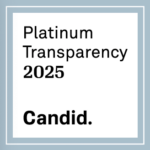CHICAGO—In the eyes of Richard Pazdur, a breakthrough cancer drug should be “transformative.”
His view is important because Dr. Pazdur is the head of the U.S. Food and Drug Administration’s office of hematology and oncology products, which helps decide whether experimental cancer drugs are sufficiently safe and effective to go on the market.
Under a new law that took effect last year, the agency has been designating certain drugs in development as “breakthroughs,” based on preliminary clinical evidence that suggests the drug could be a substantial improvement in treating serious or life-threatening diseases.
The designation makes a drug eligible for extra attention from the agency that could potentially quicken its approval to market. Several breakthrough designations so far have been for experimental cancer drugs, such as Pfizer Inc.’s PFE +0.28% palbociclib for breast cancer and Merck MRK -0.63% & Co.’s lambrolizumab for melanoma.
But some drug companies and investors have expressed uncertainty about what the designation means in practical terms, or why certain drugs are so deemed while others aren’t.
In April, Goldman Sachs GS -1.71% analyst Jami Rubin said there was “some confusion in the marketplace” because the FDA had granted breakthrough designation to Merck’s lambrolizumab but not to a similar drug from Bristol-Myers Squibb Co., BMY -1.15% which many investors thought was the leader of the pack.
There also has been confusion about how the “breakthrough” designation differs from existing FDA programs aimed at speeding drug development; meanwhile, some industry watchers are concerned the new designation will be given by the FDA too freely, diluting its importance.
Dr. Pazdur, a trained oncologist, tried to shed more light on the new regulatory scheme at the annual meeting of the American Society of Clinical Oncology in Chicago, acknowledging that certain features of the program hadn’t been “well-expressed.”
“It’s really for transformative therapies that are a marked improvement, where there is no therapy, or a drug has a significant advance over what is out there,” based on preliminary evidence, Dr. Pazdur said in an interview.
Dr. Pazdur said even drugs that have completed late-stage studies can get breakthrough designations, because one of the aims of the program is to speed FDA review times for drug applications.
The designation is meant to trigger more frequent communications between a breakthrough drug’s developer and FDA staff, including senior agency officials, Dr. Pazdur said. These are meant to go beyond the traditional “landmark” meetings between FDA and drug developers, such as at the end of phase 2 midstage clinical trials.
The breakthrough designation involves a more continuous dialogue in which the FDA can recommend changes in the development plan, such as reducing the number of patients in a clinical trial if preliminary results suggest a drug’s efficacy is greater than expected, Dr. Pazdur said.
Also, the FDA can take quicker action to address any manufacturing or supply issues that would otherwise delay agency approval of a drug. He said there have been times when the FDA was ready to approve a drug based on its clinical evidence, but manufacturing issues held up the final decision.
“It’s a mind-changer both for industry and FDA,” Dr. Pazdur said. Ideally, the heightened input by FDA during clinical development will result in an expedited review process once a drug company submits a formal new drug application, he said.
Drug makers have said they don’t fully know what the breakthrough designation will bring, but those who have received it are reporting positive interactions with the agency so far.
Johnson & Johnson JNJ -0.06% and collaborator Pharmacyclics Inc. PCYC -3.16% received FDA breakthrough designation for the experimental cancer drug ibrutinib.
“We are getting meetings very quickly with the FDA,” said Peter Lebowitz, global oncology therapeutic area head with J&J’s Janssen division. “FDA is working with us to solve issues.” He expects the designation will have a “big impact” on how quickly the company can advance ibrutinib.
“We have unfettered access to higher-level officials at the FDA,” said Gary Gilliland, a Merck senior vice president and oncology franchise head. The agency has provided guidance on Merck’s clinical development program with an aim toward submitting the drug for approval as quickly as possible.
Lambrolizumab belongs to a class of immunotherapy drugs known as anti-PD-1’s. Bristol-Myers is developing an anti-PD-1, nivolumab, which has generated promising clinical data and is perceived by some analysts to be leading the race to market for this drug category.
But nivolumab hasn’t been granted “breakthrough” designation; the FDA has put the drug in its “fast-track” program, an older program designed to speed drug development. One difference is that a drug can enter the fast-track program based on preclinical data—such as lab tests—while the breakthrough program requires clinical-trial data.
Bristol-Myers has declined to say whether it applied for breakthrough designation. The FDA has denied some applications for breakthrough status, but the agency doesn’t identify rejected applicants.
Dr. Pazdur said the designation of one drug in a new class as a breakthrough doesn’t preclude others in the same class from getting the designation. He also said some applications for breakthrough status may be premature because not enough patients have been treated with an experimental drug.
Dr. Pazdur’s comments, while not specific to Bristol, seem to leave the door open that nivolumab could still get breakthrough status in the future, as more data are reported.
Michael Giordano, senior vice president of development of oncology and immunology at Bristol-Myers, said the company has a “very collaborative” relationship with the FDA under nivolumab’s fast-track status. “That has enabled us to have the right discussions when they or we need to have them.”
http://online.wsj.com/article/SB100014241278873240633045785235609819601…

